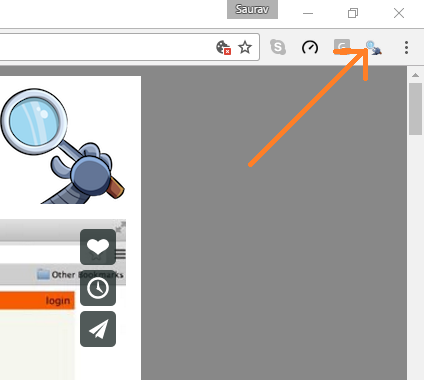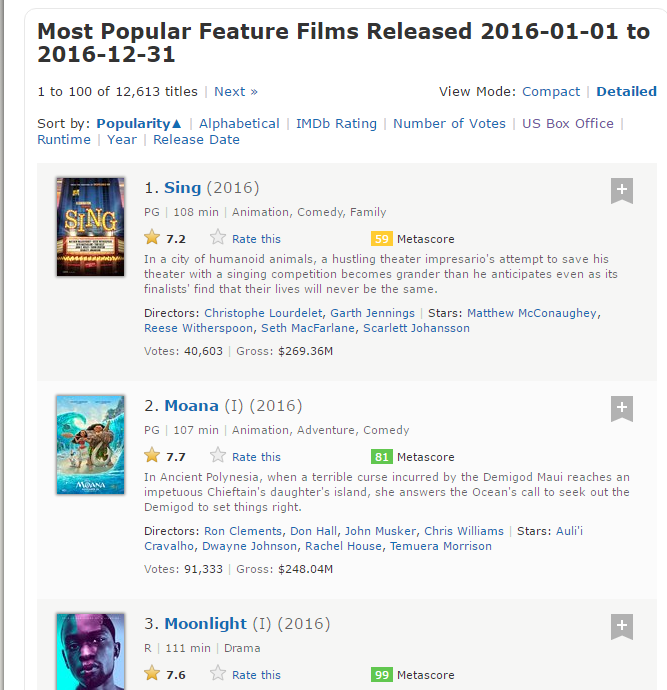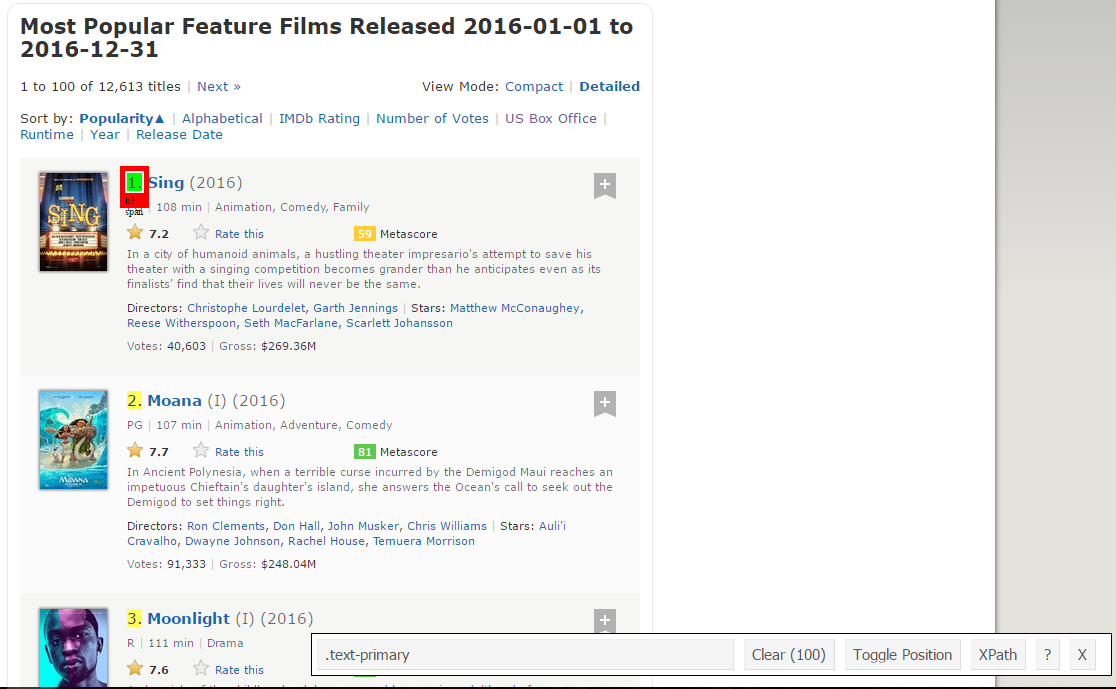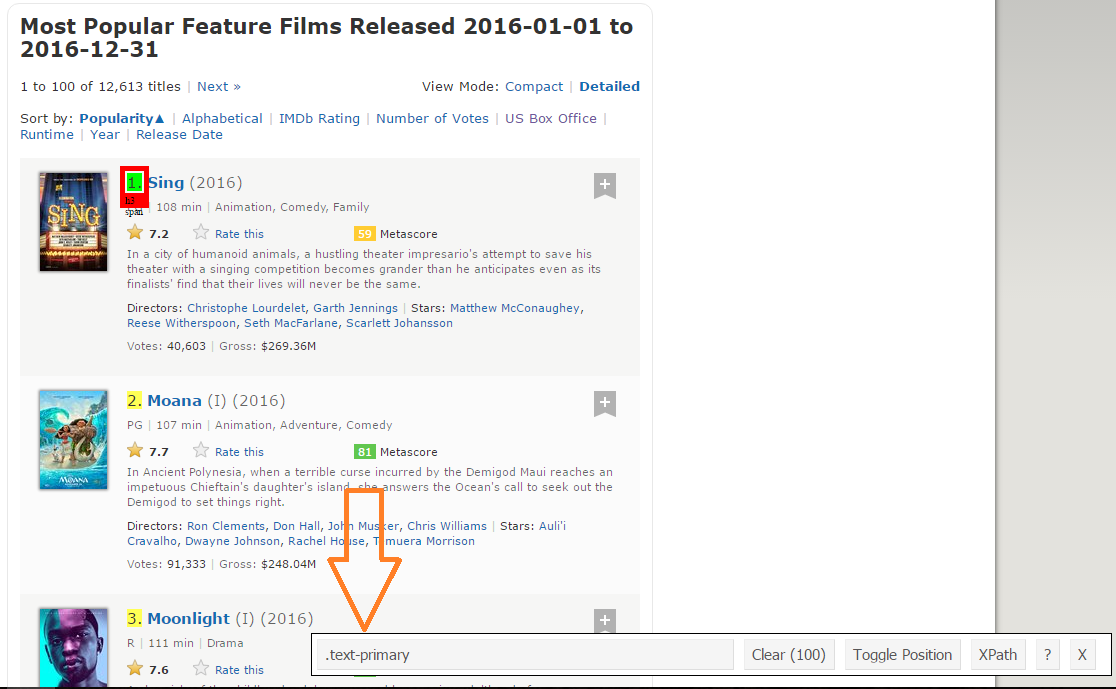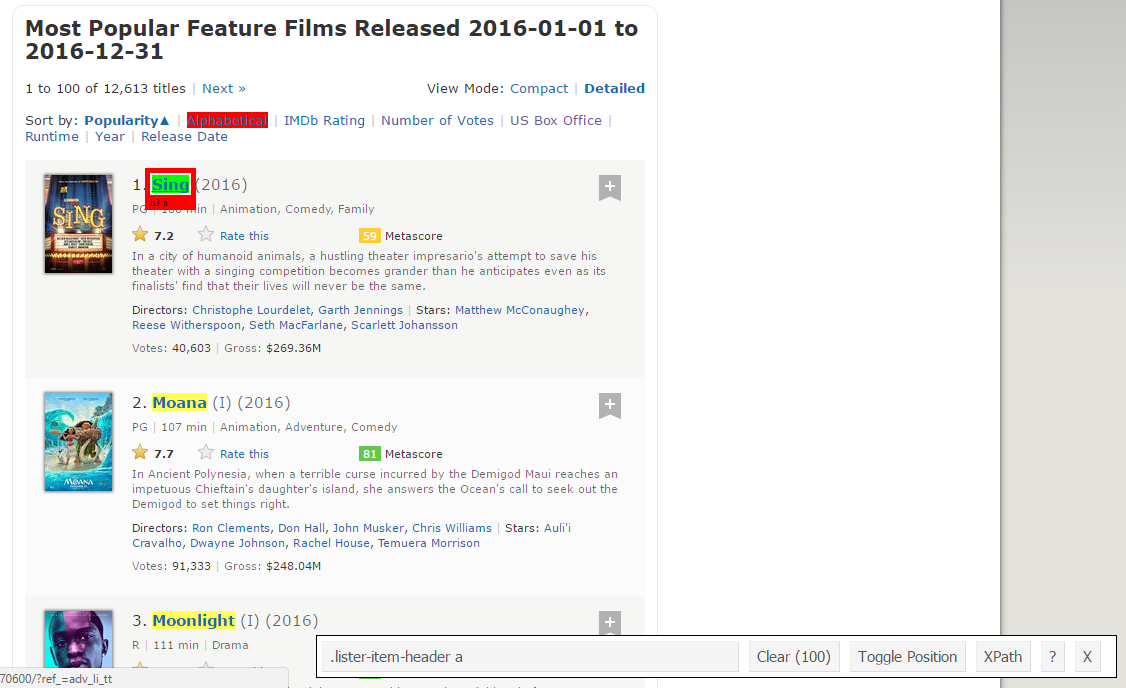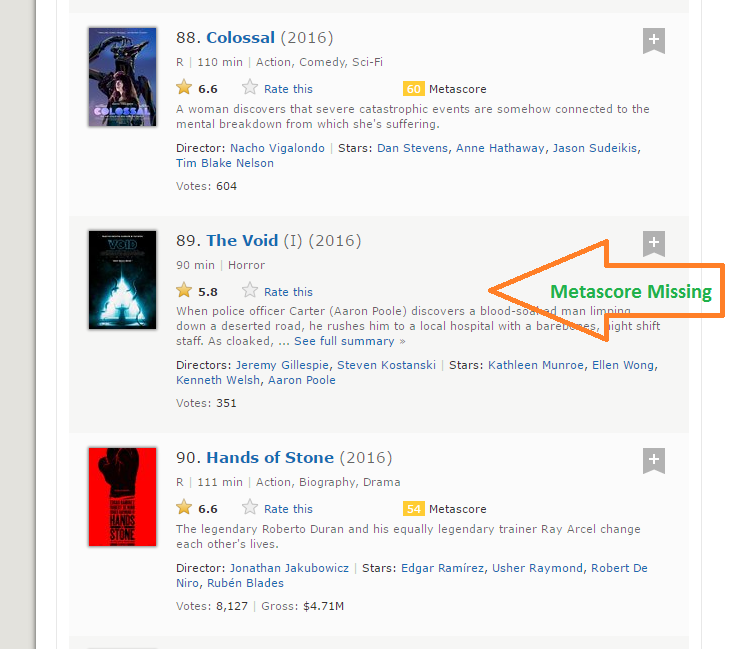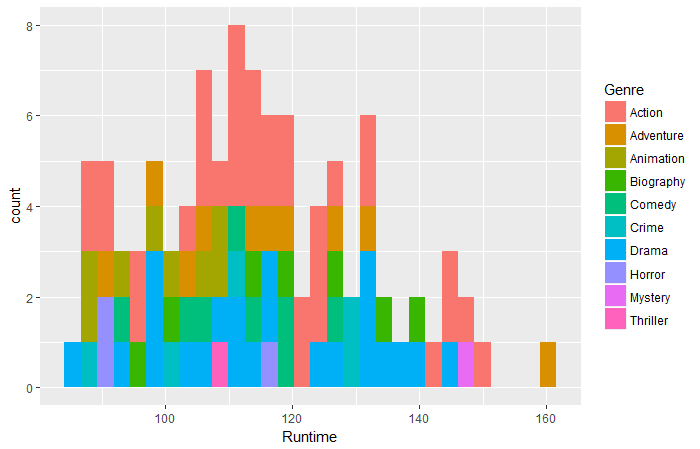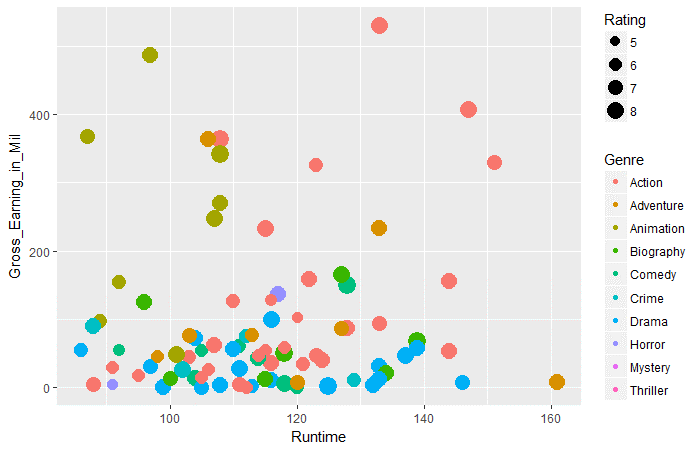Introduction
Data and information on the web is growing exponentially. All of us today use Google as our first source of knowledge – be it about finding reviews about a place to understanding a new term. All this information is available on the web already.
With the amount of data available over the web, it opens new horizons of possibility for a Data Scientist. I strongly believe web scraping is a must have skill for any data scientist. In today’s world, all the data that you need is already available on the internet – the only thing limiting you from using it is the ability to access it. With the help of this article, you will be able to overcome that barrier as well.
Most of the data available over the web is not readily available. It is present in an unstructured format (HTML format) and is not downloadable. Therefore, it requires knowledge & expertise to use this data to eventually build a useful model.
In this article, I am going to take you through the process of web scraping in R. With this article, you will gain expertise to use any type of data available over the internet.
Table of Contents
- What is Web Scraping?
- Why do we need Web Scraping in Data Science?
- Ways to scrape data
- Pre-requisites
- Scraping a web page using R
- Analyzing scraped data from the web
1. What is Web Scraping?
Web scraping is a technique for converting the data present in unstructured format (HTML tags) over the web to the structured format which can easily be accessed and used.
Almost all the main languages provide ways for performing web scraping. In this article, we’ll use R for scraping the data for the most popular feature films of 2016 from the IMDb website.
We’ll get a number of features for each of the 100 popular feature films released in 2016. Also, we’ll look at the most common problems that one might face while scraping data from the internet because of the lack of consistency in the website code and look at how to solve these problems.
If you are more comfortable using Python, I’ll recommend you to go through this guide for getting started with web scraping using Python.
2. Why do we need Web Scraping?
I am sure the first questions that must have popped in your head till now is “Why do we need web scraping”? As I stated before, the possibilities with web scraping are immense.
To provide you with hands-on knowledge, we are going to scrape data from IMDB. Some other possible applications that you can use web scraping for are:
- Scraping movie rating data to create movie recommendation engines.
- Scraping text data from Wikipedia and other sources for making NLP-based systems or training deep learning models for tasks like topic recognition from the given text.
- Scraping labeled image data from websites like Google, Flickr, etc to train image classification models.
- Scraping data from social media sites like Facebook and Twitter for performing tasks Sentiment analysis, opinion mining, etc.
- Scraping user reviews and feedbacks from e-commerce sites like Amazon, Flipkart, etc.
3. Ways to scrape data
There are several ways of scraping data from the web. Some of the popular ways are:
- Human Copy-Paste: This is a slow and efficient way of scraping data from the web. This involves humans themselves analyzing and copying the data to local storage.
- Text pattern matching: Another simple yet powerful approach to extract information from the web is by using regular expression matching facilities of programming languages. You can learn more about regular expressions here.
- API Interface: Many websites like Facebook, Twitter, LinkedIn, etc. provides public and/ or private APIs which can be called using the standard code for retrieving the data in the prescribed format.
- DOM Parsing: By using web browsers, programs can retrieve the dynamic content generated by client-side scripts. It is also possible to parse web pages into a DOM tree, based on which programs can retrieve parts of these pages.
We’ll use the DOM parsing approach during the course of this article. And rely on the CSS selectors of the webpage for finding the relevant fields which contain the desired information. But before we begin there are a few prerequisites that one need in order to proficiently scrape data from any website.
4. Pre-requisites
The prerequisites for performing web scraping in R are divided into two buckets:
- To get started with web scraping, you must have a working knowledge of R language. If you are just starting or want to brush up the basics, I’ll highly recommend following this learning path in R. During the course of this article, we’ll be using the ‘rvest’ package in R authored by Hadley Wickham. You can access the documentation for rvest package here. Make sure you have this package installed. If you don’t have this package by now, you can follow the following code to install it.
install.packages('rvest')
- Adding, knowledge of HTML and CSS will be an added advantage. One of the best sources I could find for learning HTML and CSS is this. I have observed that most of the Data Scientists are not very sound with technical knowledge of HTML and CSS. Therefore, we’ll be using an open source software named Selector Gadget which will be more than sufficient for anyone in order to perform Web scraping. You can access and download the Selector Gadget extension here. Make sure that you have this extension installed by following the instructions from the website. I have done the same. I’m using Google chrome and I can access the extension in the extension bar to the top right.
Using this you can select the parts of any website and get the relevant tags to get access to that part by simply clicking on that part of the website. Note that, this is a way around to actually learning HTML & CSS and doing it manually. But to master the art of Web scraping, I’ll highly recommend you to learn HTML & CSS in order to better understand and appreciate what’s happening under the hood.
4. Scraping a webpage using R
Now, let’s get started with scraping the IMDb website for the 100 most popular feature films released in 2016. You can access them here.
#Loading the rvest package
library('rvest')
#Specifying the url for desired website to be scraped
url <- 'http://www.imdb.com/search/title?count=100&release_date=2016,2016&title_type=feature'
#Reading the HTML code from the website
webpage <- read_html(url)
Now, we’ll be scraping the following data from this website.
- Rank: The rank of the film from 1 to 100 on the list of 100 most popular feature films released in 2016.
- Title: The title of the feature film.
- Description: The description of the feature film.
- Runtime: The duration of the feature film.
- Genre: The genre of the feature film,
- Rating: The IMDb rating of the feature film.
- Metascore: The metascore on IMDb website for the feature film.
- Votes: Votes cast in favor of the feature film.
- Gross_Earning_in_Mil: The gross earnings of the feature film in millions.
- Director: The main director of the feature film. Note, in case of multiple directors, I’ll take only the first.
- Actor: The main actor in the feature film. Note, in case of multiple actors, I’ll take only the first.
Here’s a screenshot that contains how all these fields are arranged.
Step 1: Now, we will start by scraping the Rank field. For that, we’ll use the selector gadget to get the specific CSS selectors that encloses the rankings. You can click on the extension in your browser and select the rankings field with the cursor.
Make sure that all the rankings are selected. You can select some more ranking sections in case you are not able to get all of them and you can also de-select them by clicking on the selected section to make sure that you only have those sections highlighted that you want to scrape for that go.
Step 2: Once you are sure that you have made the right selections, you need to copy the corresponding CSS selector that you can view in the bottom center.
Step 3: Once you know the CSS selector that contains the rankings, you can use this simple R code to get all the rankings:
#Using CSS selectors to scrape the rankings section rank_data_html <- html_nodes(webpage,'.text-primary') #Converting the ranking data to text rank_data <- html_text(rank_data_html) #Let's have a look at the rankings head(rank_data) [1] "1." "2." "3." "4." "5." "6."
Step 4: Once you have the data, make sure that it looks in the desired format. I am preprocessing my data to convert it to numerical format.
#Data-Preprocessing: Converting rankings to numerical rank_data<-as.numeric(rank_data) #Let's have another look at the rankings head(rank_data) [1] 1 2 3 4 5 6
Step 5: Now you can clear the selector section and select all the titles. You can visually inspect that all the titles are selected. Make any required additions and deletions with the help of your curser. I have done the same here.
Step 6: Again, I have the corresponding CSS selector for the titles – .lister-item-header a. I will use this selector to scrape all the titles using the following code.
#Using CSS selectors to scrape the title section title_data_html <- html_nodes(webpage,'.lister-item-header a') #Converting the title data to text title_data <- html_text(title_data_html) #Let's have a look at the title head(title_data) [1] "Sing" "Moana" "Moonlight" "Hacksaw Ridge" [5] "Passengers" "Trolls"
Step 7: In the following code, I have done the same thing for scraping – Description, Runtime, Genre, Rating, Metascore, Votes, Gross_Earning_in_Mil , Director and Actor data.
#Using CSS selectors to scrape the description section
description_data_html <- html_nodes(webpage,'.ratings-bar+ .text-muted')
#Converting the description data to text
description_data <- html_text(description_data_html)
#Let's have a look at the description data
head(description_data)
[1] "\nIn a city of humanoid animals, a hustling theater impresario's attempt to save his theater with a singing competition becomes grander than he anticipates even as its finalists' find that their lives will never be the same."
[2] "\nIn Ancient Polynesia, when a terrible curse incurred by the Demigod Maui reaches an impetuous Chieftain's daughter's island, she answers the Ocean's call to seek out the Demigod to set things right."
[3] "\nA chronicle of the childhood, adolescence and burgeoning adulthood of a young, African-American, gay man growing up in a rough neighborhood of Miami."
[4] "\nWWII American Army Medic Desmond T. Doss, who served during the Battle of Okinawa, refuses to kill people, and becomes the first man in American history to receive the Medal of Honor without firing a shot."
[5] "\nA spacecraft traveling to a distant colony planet and transporting thousands of people has a malfunction in its sleep chambers. As a result, two passengers are awakened 90 years early."
[6] "\nAfter the Bergens invade Troll Village, Poppy, the happiest Troll ever born, and the curmudgeonly Branch set off on a journey to rescue her friends.
#Data-Preprocessing: removing '\n'
description_data<-gsub("\n","",description_data)
#Let's have another look at the description data
head(description_data)
[1] "In a city of humanoid animals, a hustling theater impresario's attempt to save his theater with a singing competition becomes grander than he anticipates even as its finalists' find that their lives will never be the same."
[2] "In Ancient Polynesia, when a terrible curse incurred by the Demigod Maui reaches an impetuous Chieftain's daughter's island, she answers the Ocean's call to seek out the Demigod to set things right."
[3] "A chronicle of the childhood, adolescence and burgeoning adulthood of a young, African-American, gay man growing up in a rough neighborhood of Miami."
[4] "WWII American Army Medic Desmond T. Doss, who served during the Battle of Okinawa, refuses to kill people, and becomes the first man in American history to receive the Medal of Honor without firing a shot."
[5] "A spacecraft traveling to a distant colony planet and transporting thousands of people has a malfunction in its sleep chambers. As a result, two passengers are awakened 90 years early."
[6] "After the Bergens invade Troll Village, Poppy, the happiest Troll ever born, and the curmudgeonly Branch set off on a journey to rescue her friends."
#Using CSS selectors to scrape the Movie runtime section
runtime_data_html <- html_nodes(webpage,'.text-muted .runtime')
#Converting the runtime data to text
runtime_data <- html_text(runtime_data_html)
#Let's have a look at the runtime
head(runtime_data)
[1] "108 min" "107 min" "111 min" "139 min" "116 min" "92 min"
#Data-Preprocessing: removing mins and converting it to numerical
runtime_data<-gsub(" min","",runtime_data)
runtime_data<-as.numeric(runtime_data)
#Let's have another look at the runtime data
head(runtime_data)
[1] 1 2 3 4 5 6
#Using CSS selectors to scrape the Movie genre section
genre_data_html <- html_nodes(webpage,'.genre')
#Converting the genre data to text
genre_data <- html_text(genre_data_html)
#Let's have a look at the runtime
head(genre_data)
[1] "\nAnimation, Comedy, Family "
[2] "\nAnimation, Adventure, Comedy "
[3] "\nDrama "
[4] "\nBiography, Drama, History "
[5] "\nAdventure, Drama, Romance "
[6] "\nAnimation, Adventure, Comedy "
#Data-Preprocessing: removing \n
genre_data<-gsub("\n","",genre_data)
#Data-Preprocessing: removing excess spaces
genre_data<-gsub(" ","",genre_data)
#taking only the first genre of each movie
genre_data<-gsub(",.*","",genre_data)
#Convering each genre from text to factor
genre_data<-as.factor(genre_data)
#Let's have another look at the genre data
head(genre_data)
[1] Animation Animation Drama Biography Adventure Animation
10 Levels: Action Adventure Animation Biography Comedy Crime Drama ... Thriller
#Using CSS selectors to scrape the IMDB rating section
rating_data_html <- html_nodes(webpage,'.ratings-imdb-rating strong')
#Converting the ratings data to text
rating_data <- html_text(rating_data_html)
#Let's have a look at the ratings
head(rating_data)
[1] "7.2" "7.7" "7.6" "8.2" "7.0" "6.5"
#Data-Preprocessing: converting ratings to numerical
rating_data<-as.numeric(rating_data)
#Let's have another look at the ratings data
head(rating_data)
[1] 7.2 7.7 7.6 8.2 7.0 6.5
#Using CSS selectors to scrape the votes section
votes_data_html <- html_nodes(webpage,'.sort-num_votes-visible span:nth-child(2)')
#Converting the votes data to text
votes_data <- html_text(votes_data_html)
#Let's have a look at the votes data
head(votes_data)
[1] "40,603" "91,333" "112,609" "177,229" "148,467" "32,497"
#Data-Preprocessing: removing commas
votes_data<-gsub(",","",votes_data)
#Data-Preprocessing: converting votes to numerical
votes_data<-as.numeric(votes_data)
#Let's have another look at the votes data
head(votes_data)
[1] 40603 91333 112609 177229 148467 32497
#Using CSS selectors to scrape the directors section
directors_data_html <- html_nodes(webpage,'.text-muted+ p a:nth-child(1)')
#Converting the directors data to text
directors_data <- html_text(directors_data_html)
#Let's have a look at the directors data
head(directors_data)
[1] "Christophe Lourdelet" "Ron Clements" "Barry Jenkins"
[4] "Mel Gibson" "Morten Tyldum" "Walt Dohrn"
#Data-Preprocessing: converting directors data into factors
directors_data<-as.factor(directors_data)
#Using CSS selectors to scrape the actors section
actors_data_html <- html_nodes(webpage,'.lister-item-content .ghost+ a')
#Converting the gross actors data to text
actors_data <- html_text(actors_data_html)
#Let's have a look at the actors data
head(actors_data)
[1] "Matthew McConaughey" "Auli'i Cravalho" "Mahershala Ali"
[4] "Andrew Garfield" "Jennifer Lawrence" "Anna Kendrick"
#Data-Preprocessing: converting actors data into factors
actors_data<-as.factor(actors_data)
But, I want you to closely follow what happens when I do the same thing for Metascore data.
#Using CSS selectors to scrape the metascore section
metascore_data_html <- html_nodes(webpage,'.metascore')
#Converting the runtime data to text
metascore_data <- html_text(metascore_data_html)
#Let's have a look at the metascore
data head(metascore_data)
[1] "59 " "81 " "99 " "71 " "41 "
[6] "56 "
#Data-Preprocessing: removing extra space in metascore
metascore_data<-gsub(" ","",metascore_data)
#Lets check the length of metascore data
length(metascore_data)
[1] 96
Step 8: The length of the metascore data is 96 while we are scraping the data for 100 movies. The reason this happened is that there are 4 movies that don’t have the corresponding Metascore fields.
Step 9: It is a practical situation which can arise while scraping any website. Unfortunately, if we simply add NA’s to last 4 entries, it will map NA as Metascore for movies 96 to 100 while in reality, the data is missing for some other movies. After a visual inspection, I found that the Metascore is missing for movies 39, 73, 80 and 89. I have written the following function to get around this problem.
for (i in c(39,73,80,89)){
a<-metascore_data[1:(i-1)]
b<-metascore_data[i:length(metascore_data)]
metascore_data<-append(a,list("NA"))
metascore_data<-append(metascore_data,b)
}
#Data-Preprocessing: converting metascore to numerical
metascore_data<-as.numeric(metascore_data)
#Let's have another look at length of the metascore data
length(metascore_data)
[1] 100
#Let's look at summary statistics
summary(metascore_data)
Min. 1st Qu. Median Mean 3rd Qu. Max. NA's
23.00 47.00 60.00 60.22 74.00 99.00 4
Step 10: The same thing happens with the Gross variable which represents gross earnings of that movie in millions. I have use the same solution to work my way around:
#Using CSS selectors to scrape the gross revenue section
gross_data_html <- html_nodes(webpage,'.ghost~ .text-muted+ span')
#Converting the gross revenue data to text
gross_data <- html_text(gross_data_html)
#Let's have a look at the votes data
head(gross_data)
[1] "$269.36M" "$248.04M" "$27.50M" "$67.12M" "$99.47M" "$153.67M"
#Data-Preprocessing: removing '$' and 'M' signs
gross_data<-gsub("M","",gross_data)
gross_data<-substring(gross_data,2,6)
#Let's check the length of gross data
length(gross_data)
[1] 86
#Filling missing entries with NA
for (i in c(17,39,49,52,57,64,66,73,76,77,80,87,88,89)){
a<-gross_data[1:(i-1)]
b<-gross_data[i:length(gross_data)]
gross_data<-append(a,list("NA"))
gross_data<-append(gross_data,b)
}
#Data-Preprocessing: converting gross to numerical
gross_data<-as.numeric(gross_data)
#Let's have another look at the length of gross data
length(gross_data)
[1] 100
summary(gross_data)
Min. 1st Qu. Median Mean 3rd Qu. Max. NA's
0.08 15.52 54.69 96.91 119.50 530.70 14
Step 11: Now we have successfully scraped all the 11 features for the 100 most popular feature films released in 2016. Let’s combine them to create a dataframe and inspect its structure.
#Combining all the lists to form a data frame movies_df<-data.frame(Rank = rank_data, Title = title_data, Description = description_data, Runtime = runtime_data, Genre = genre_data, Rating = rating_data, Metascore = metascore_data, Votes = votes_data, Gross_Earning_in_Mil = gross_data, Director = directors_data, Actor = actors_data) #Structure of the data frame str(movies_df) 'data.frame': 100 obs. of 11 variables: $ Rank : num 1 2 3 4 5 6 7 8 9 10 ... $ Title : Factor w/ 99 levels "10 Cloverfield Lane",..: 66 53 54 32 58 93 8 43 97 7 ... $ Description : Factor w/ 100 levels "19-year-old Billy Lynn is brought home for a victory tour after a harrowing Iraq battle. Through flashbacks the film shows what"| __truncated__,..: 57 59 3 100 21 33 90 14 13 97 ... $ Runtime : num 108 107 111 139 116 92 115 128 111 116 ... $ Genre : Factor w/ 10 levels "Action","Adventure",..: 3 3 7 4 2 3 1 5 5 7 ... $ Rating : num 7.2 7.7 7.6 8.2 7 6.5 6.1 8.4 6.3 8 ... $ Metascore : num 59 81 99 71 41 56 36 93 39 81 ... $ Votes : num 40603 91333 112609 177229 148467 ... $ Gross_Earning_in_Mil: num 269.3 248 27.5 67.1 99.5 ... $ Director : Factor w/ 98 levels "Andrew Stanton",..: 17 80 9 64 67 95 56 19 49 28 ... $ Actor : Factor w/ 86 levels "Aaron Eckhart",..: 59 7 56 5 42 6 64 71 86 3 ...
You have now successfully scraped the IMDb website for the 100 most popular feature films released in 2016.
6. Analyzing scraped data from the web
Once you have the data, you can perform several tasks like analyzing the data, drawing inferences from it, training machine learning models over this data, etc. I have gone on to create some interesting visualization out of the data we have just scraped. Follow the visualizations and answer the questions given below. Post your answers in the comment section below.
library('ggplot2')
qplot(data = movies_df,Runtime,fill = Genre,bins = 30)
Question 1: Based on the above data, which movie from which Genre had the longest runtime?
ggplot(movies_df,aes(x=Runtime,y=Rating))+ geom_point(aes(size=Votes,col=Genre))
Question 2: Based on the above data, in the Runtime of 130-160 mins, which genre has the highest votes?
ggplot(movies_df,aes(x=Runtime,y=Gross_Earning_in_Mil))+ geom_point(aes(size=Rating,col=Genre))
Question 3: Based on the above data, across all genres which genre has the highest average gross earnings in runtime 100 to 120.
End Notes
I believe this article would have given you a complete understanding of the web scraping in R. Now, you also have a fair idea of the problems which you might come across and how you can make your way around them. As most of the data on the web is present in an unstructured format, web scraping is a really handy skill for any data scientist.
Also, you can post the answers to the above three questions in the comment section below. Did you enjoy reading this article? Do share your views with me. If you have any doubts/questionsns feel free to drop them below.




